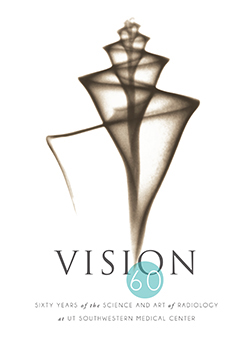History

Foreword
In the early years of radiology, it was not uncommon for radiology departments to be small, behind-the-scenes organizations, often made up of a handful of local physicians rotating on call through several hospitals, or perhaps operating as a part of the hospital's surgery department. It was from just such humble beginnings that today's Department of Radiology at UT Southwestern Medical Center emerged.
One of the more interesting aspects of radiology is that many of its practitioners did not originally intend to enter the field at the beginning of their medical careers. This still holds true for some of today's most outstanding radiologists. Yet they soon understand their chosen career has many exciting opportunities in clinical medicine, teaching, and research, and that they are often essential members of multidisciplinary healthcare teams.
During the past 60 years, numerous medical milestones and history-making events have shaped the Department of Radiology and UT Southwestern. The history of the department continues to be written every day, with contributions made by faculty, fellows, residents, staff and students. Together they have always shared one primary goal — to push the boundaries of medicine and provide the best possible care for patients.
